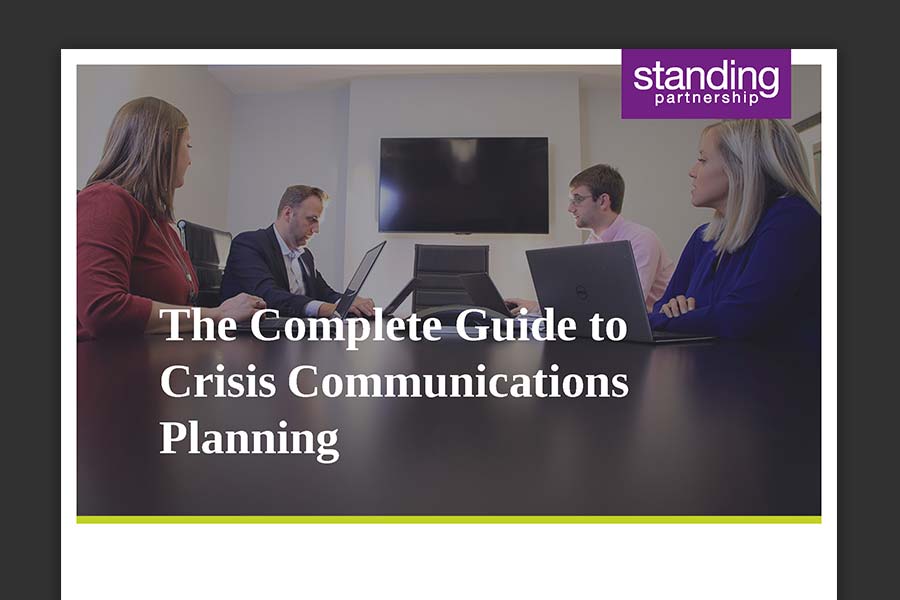How Crisis Planning Supported Las Vegas When Tragedy Struck
Advanced preparation helped Las Vegas when the unexpected occurred.
Who can forget the tragedy that occurred in Las Vegas last October? 58 people were killed and 851 were injured in the deadliest mass shooting in the history of the United States.
What you likely don’t know is what went on before the crisis that helped Las Vegas bring people around the world together in support, and helped the city quickly rally back to the pre-crisis tourism levels that much of the region’s economy depends on.
Crisis Planning Provides a Roadmap for Response
The mass shooting was unexpected and brutally quick, and the head of marketing for the Las Vegas Convention and Visitor Authority was on vacation in Italy when it happened. Yet, Chief Marketing Officer Cathy Tull and her team were well equipped to address the unfolding situation because they had an updated crisis communications plan in place that enabled them to move quickly, identify initial steps and signal to their community and the world that Las Vegas would mourn the tragedy, and then ultimately rebound.
This recent article by CBC Radio outlines steps Cathy and her team took to reassure visitors that Vegas was still a safe destination for vacations and conferences alike:
- All advertising was suspended within 45 minutes of the shooting
- The crisis team met to review its communications strategy
- #VegasStrong was identified as a heartfelt and meaningful expression of public sentiment. The team posted related messages of support on the city’s social media channels
- Well-known local resident Andre Agassi was recruited to share a message of support for the community, resulting in $3M+ in donations
- Billboards thanking visitors for their support were posted throughout the region
- Celebrity-endorsed commercials welcoming visitors back to Vegas were placed with television networks
- Post-attack research insights were used to revitalize Las Vegas’ identity through new promotional campaigns
While tourism declined immediately after the shooting, the Las Vegas Convention and Visitors Authority reported convention attendance increased by 5.3% in 2017, and Las Vegas recorded its second-busiest spring ever this year. Cathy Tull’s preparedness helped the city weather the storm and eventually regain its status as a weekend playground for gamblers, the soon-to-be-wed, and sports fans.
Advanced Preparation is the Key to Crisis Management
It’s impossible to predict when a crisis will occur, so it is essential that marketing and communications teams are prepared to respond at moment’s notice — like the Las Vegas team.
Effective crisis management, regardless of whether the situation was created internally or externally, starts with preparation. If you’re not prepared in advance, the desire to react swiftly can be undermined by inadequate time for review and alignment inside the organization. A hasty response that does not align with organizational culture can result in a misstep in communication that further impacts your reputation.
Standing Partnership helps organizations prepare for the unexpected by guiding them through four crisis preparedness steps, beginning with an internal audit that evaluates existing risk factors, and an external reputation audit that takes competitive and external forces into consideration.
Then, we develop a reputation risk strategy that prioritizes likely risks and equips the organization to manage its reputation actively. Finally, we create a crisis response plan that outlines the steps, processes and communication framework that will enable the team to react quickly and effectively. Ideally the plan will be rehearsed and shared with key decision-makers before a crisis, so the incident managers can respond confidently.
Core components of a crisis plan include:
- Crisis Communications Team – members, identification of spokesperson(s), roles and responsibilities
- Crisis Communications Strategy
- Crisis level determination and decision-making protocol
- Audience profile
- Reactive vs. proactive outreach
- Media and sentiment monitoring process
- Media/social media policies
- Dark site location and steps to activate
- Crisis Scenario Planning
- Crisis descriptions, potential impacts and outcomes
- Key messages
- Communications channels
- Draft communications materials
- Supporting Documents
- Media Policy
- Social Media Policy
- Boilerplates
- Spokesperson Bios
- Contact Lists

